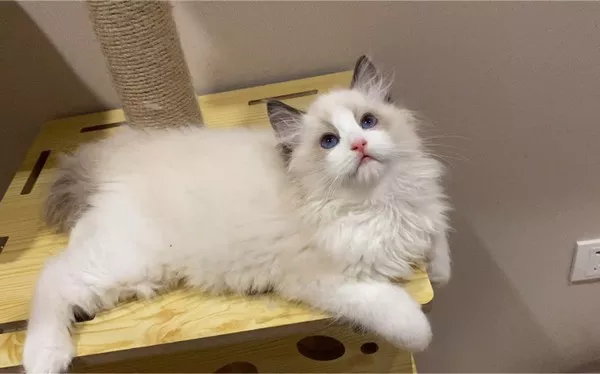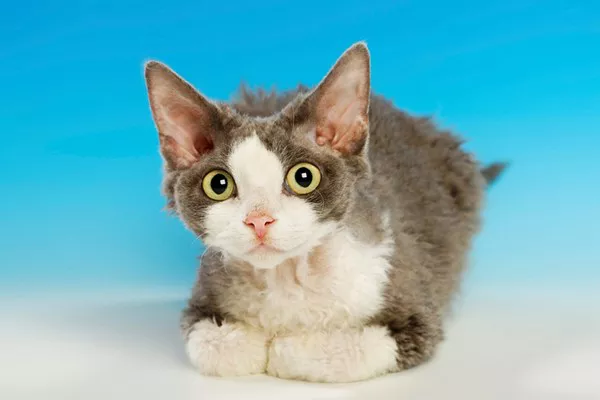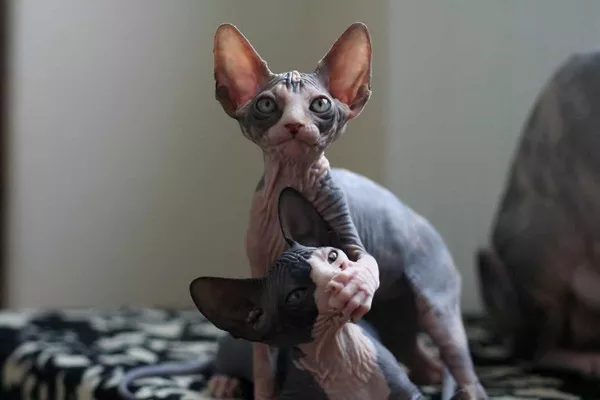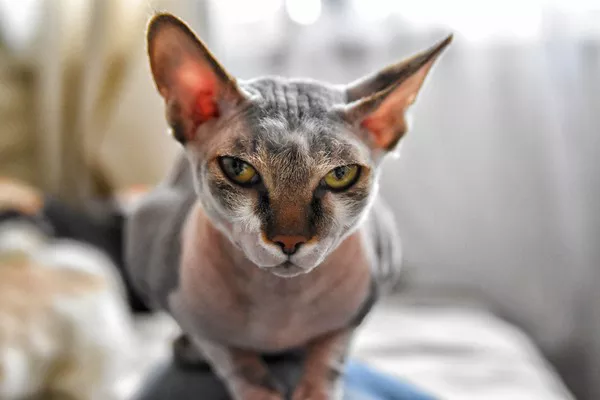The world of feline companionship is diverse and enchanting, with each cat breed bringing its own set of characteristics to the table. Among the breeds that stand out for their distinctive appearance and gentle demeanor, the Ragdoll cat holds a special place. Known for their striking blue eyes, silky semi-longhair coat, and docile nature, Ragdolls are a sought-after breed. In this comprehensive exploration, we delve into the fascinating world of female Ragdoll cats, unraveling the mysteries surrounding female Ragdoll cats’ size, growth patterns, and the factors that contribute to their majestic stature.
The Allure of the Ragdoll Cat
Ragdoll cats, often referred to as “puppy-like” due to their tendency to go limp when picked up, have captured the hearts of cat lovers around the globe. This breed, known for its affectionate and placid temperament, was developed in the 1960s by breeder Ann Baker in Riverside, California. Ragdolls quickly gained popularity for their large size, striking blue eyes, and distinctive color-point coat patterns reminiscent of Siamese cats.
While the overall size of Ragdoll cats is a key characteristic, understanding the growth patterns of female Ragdolls requires a closer examination of factors such as genetics, nutrition, and individual health. In this in-depth exploration, we aim to provide a comprehensive guide for cat enthusiasts, prospective Ragdoll owners, and anyone intrigued by the captivating world of feline companionship.
Origins and Characteristics of the Ragdoll Breed
Before delving into the size specifics of female Ragdoll cats, it’s essential to appreciate the breed’s origins and distinctive characteristics. Ragdolls are known for their large size, captivating blue eyes, and a semi-longhair coat that comes in a variety of colors and patterns. The breed’s name is a nod to their tendency to go limp when picked up, a characteristic that adds to their endearing and docile nature.
Ragdolls are often described as “puppy-like” not only for their tendency to relax in the arms of their owners but also for their sociable and affectionate behavior. They thrive on human companionship, making them well-suited for families and individuals seeking a devoted feline friend. The breed’s gentle disposition and striking appearance have contributed to its popularity, with Ragdolls often featured in cat shows and admired for their unique traits.
Understanding the Growth Stages of Female Ragdoll Cats
Like all cats, female Ragdolls go through distinct growth stages from kittenhood to adulthood. The rate of growth and the ultimate size a Ragdoll cat will reach are influenced by various factors, including genetics, nutrition, and overall health.
1. Kittenhood (0-6 months): The early stages of a female Ragdoll’s life are marked by rapid growth. During this period, kittens are highly active, playful, and curious. Proper nutrition is crucial at this stage to support healthy development. Ragdoll kittens are known for their striking blue eyes and fluffy fur, and their distinctive color points start becoming more pronounced.
2. Adolescence (6-12 months): As Ragdoll kittens transition into adolescence, their growth rate begins to slow, but they continue to gain size. This stage is characterized by the further development of the color points and the establishment of the breed’s signature coat pattern. Ragdoll cats generally maintain their playful and sociable nature during adolescence.
3. Young Adulthood (1-2 years): Female Ragdoll cats typically reach their full size and maturity by the age of two. During this period, their bodies fill out, and their features become more defined. While Ragdolls are known for their large size, individual variations exist, and factors such as genetics and overall health play a significant role in determining the final size of a female Ragdoll cat.
4. Adulthood (2 years and beyond): Beyond the age of two, female Ragdoll cats enter full adulthood. They have achieved their maximum size, and their personalities are well-established. Ragdolls are known to be one of the larger cat breeds, and their size is a notable characteristic that distinguishes them from other breeds.
Factors Influencing the Size of Female Ragdoll Cats
Several factors contribute to the ultimate size that a female Ragdoll cat will reach. Understanding these factors can provide valuable insights for cat owners and breed enthusiasts:
Genetics: The genetic makeup of a Ragdoll cat plays a pivotal role in determining its size. Breeding practices, lineage, and the traits inherited from parent cats influence the overall size and appearance of Ragdoll offspring.
Nutrition: Proper nutrition is essential for the healthy growth and development of Ragdoll cats. High-quality cat food that meets the breed’s specific dietary needs ensures that kittens receive the necessary nutrients for optimal growth. Nutritional support continues to be crucial throughout adulthood to maintain overall health.
Health Care: Regular veterinary check-ups, vaccinations, and preventive care contribute to the well-being of Ragdoll cats. Addressing any health concerns promptly can impact a cat’s growth and overall size.
Spaying/Neutering: The decision to spay or neuter a Ragdoll cat can influence its growth patterns. Spaying and neutering are common practices to control the feline population and provide health benefits, but the timing of these procedures may affect growth rates.
Individual Variations: Each Ragdoll cat is a unique individual, and variations in size and appearance can occur even within the same litter. Factors such as metabolism, activity level, and overall genetics contribute to these individual differences.
Average Size of Female Ragdoll Cats
While Ragdolls are known for their larger size compared to many other cat breeds, providing an exact average size for female Ragdoll cats is challenging due to the individual variations within the breed. On average, female Ragdolls typically weigh between 10 to 15 pounds, with some individuals surpassing this range.
It’s important to note that size alone does not determine the health or quality of a Ragdoll cat. The breed standard emphasizes a balance between size, structure, and overall well-being. Ragdolls are known for their muscular build, strong bones, and proportionate features, contributing to their graceful and regal appearance.
The Influence of Color Points on Perception of Size
The distinctive color points of Ragdoll cats, a defining characteristic of the breed, can influence the perception of their size. The contrast between the darker points on the ears, face, paws, and tail and the lighter body color enhances the visual impact of their appearance. The interplay of colors creates an illusion of greater size, adding to the majestic and regal aura of Ragdoll cats.
Maintaining the Health and Well-Being of Female Ragdoll Cats
While the focus on the size of Ragdoll cats is intriguing, it is essential to prioritize the overall health and well-being of these feline companions. The following practices contribute to the holistic care of female Ragdoll cats:
Balanced Nutrition: Providing a well-balanced and species-appropriate diet is crucial for the health of Ragdoll cats. High-quality cat food, formulated to meet the nutritional needs of the breed, supports overall growth, muscle development, and coat health.
Regular Veterinary Check-ups: Routine veterinary visits, including vaccinations, dental care, and preventive measures, are essential for maintaining the health of Ragdoll cats. Regular check-ups allow veterinarians to address any potential health concerns and provide guidance on nutrition and care.
Grooming: Ragdoll cats have semi-longhair coats that require regular grooming to prevent matting and maintain a healthy coat. Brushing sessions, which also serve as bonding time, help reduce shedding and promote skin and coat health.
Enrichment and Play: Ragdolls are known for their playful and sociable nature. Providing opportunities for mental stimulation and physical exercise through interactive toys, climbing structures, and play sessions contributes to their overall well-being.
Spaying/Neutering Considerations: While the decision to spay or neuter a Ragdoll cat is a personal one for owners, consulting with a veterinarian about the timing and potential impact on growth is advisable. Early spaying or neutering may affect growth rates, and veterinarians can offer guidance based on individual circumstances.
Conclusion
In the realm of feline companionship, female Ragdoll cats stand out as graceful giants, enchanting their owners with their regal presence and gentle demeanor. Understanding the growth patterns and factors influencing the size of female Ragdoll cats adds depth to the appreciation of this beloved breed.
As these captivating felines transition from playful kittens to majestic adults, their distinctive color points, silky coats, and striking blue eyes create a visual symphony that captivates cat enthusiasts worldwide. Beyond their size, it is the harmonious combination of genetics, nutrition, and individual care that contributes to the overall well-being of female Ragdoll cats.



























